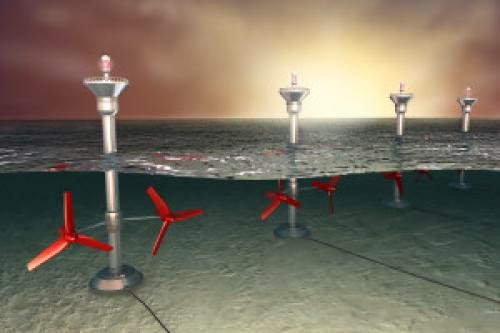
Special generators are used to create electricity from tidal energy. This industry is still very young and the energy produced so far minimal. While there are some commercial power plants harnessing tidal energy to produce energy, there are not many.
The first of these plants is located in La Rance, France. The largest plant is in South Korea at Sihwa Lake. There are no tidal energy plants within the United States and actually only a few sites where producing tidal energy would be cost effective. Russia, China, Canada, and England are all better situated for producing tidal energy.
The issues with producing tidal energy in the United States are numerous. To begin, there are legal problems concerning environmental impact and ownership of underwater lands. Since the industry is so new, there is little information or guarantees on its effectiveness or if it will actually make any money. This makes investors uneasy and hesitant to provide any money.
There are engineers and scientists working on improving the technology and developing more cost effective methods of harnessing tidal energy. They are also looking for ways to decrease the environmental impact and still earn a profit for the energy companies.
HARNESSING THE ENERGY
There are three methods to harness tidal energy. The first is within the tidal stream. Tidal turbines or energy generators are placed in the stream and gather energy from the flow of the tidal waters. These waters flow very quickly as they are created by the tides.
Tidal waters produce more energy than wind since they are much denser. Additionally, tides are stable and predictable, unlike the winds. Using tidal generators or turbines produces a reliable, steady stream of electricity.
Another method of harnessing tidal energy is to use a barrage. This is a large dam which causes the tidal waters to spill over and through the dam's turbines to create energy. Barrages are constructed across bays, tidal rivers, and estuaries.
The last method of creating energy from tides is to create a tidal lagoon. This is a body of water which is partially enclosed by a manmade or natural barrier. A tidal lagoon can also be an estuary which is fed by freshwater.
The tidal generator which uses tidal lagoons operates very similar to a barrage. Tidal lagoons, however are built along the natural coast line. This means a tidal lagoon energy plant could also produce continuous power, its turbines working as the lagoon fills and empties.
Tidal lagoons have a minimal environmental impact. Most are built from natural materials, such as rock and are constructed much like a low water sea wall. These walls are submerged during high tide and visible when the tide is low.
The structure also provides other benefits such as a place for animals to swim and for other marine life to grow. The larger predators would not be able to invade the lagoon because of the sea wall, so the smaller fish and crustaceans would do well.
The drawback to all of these methods is that tidal power output is still low. Scientists and engineers are still working on improving energy output of these methods, but until they do, the energy output may not be worth the cost of creating it.


















0 comments:
Post a Comment